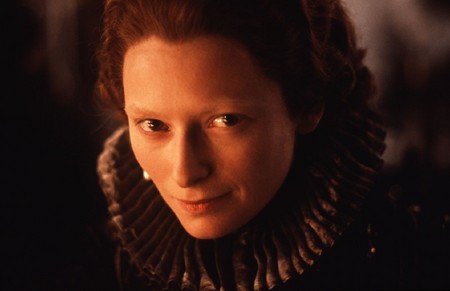

Intertextuality in Orlando
Potter says that ‘ in order to keep faith with Virginia Woolf’s use of real time ending the novel, the film had to end when it was completed-1992.’ Potter does this successfully as not only does she take on this idea the ending is not formed until everything else is shot. Although the film ending and the novel endings are different Potter loyally attempts to ‘think myself in Virginia Woolf’s consciousness’ and create a appropriate ending that Woolf herself might have written if she had lived until 1992.
Exploring the intertextual nature of Sally Potter's film, Orlando
Intertextuality in Orlando
Looking at Orlando through the realm of casting, trying to understand the significance of casting Swinton and Crisp in the film.
let's see what happens
The intertextuality of stars in Sally Potter's 'Orlando'. Explore how an actor's parcipitationand performance in a film creates new meaning.
Intertextual nature of Orlando The final comment about how she intends to begin and end in the present is interesting because I think it is relevant to every part of the process. While adapting a work, one has to think of all the different elements that go into it but ultimately the most important to consider the context that you are bringing it into. It was a smart move on Potter\'s part by bringing the film up to the present day since this is what she has done with the work.
a look into the production design and the obvious themes of gender vs identity and the need to conform to society.
I wonder if Sally Potter is a big fan of happy endings... The endings in all three feature films (Orlando, The Tango Lesson and YES) are quite happy. It seems that in all of them the character has found something that makes them feel in balance with themselves. Orlando, who in my opinion seems to represent both men and women throughout history, seems to be in such peace at the end of the movie. Sally finally finds herself in Tango with Pablo's help, and in YES, She becomes a different woman
I am interested in comparing what Vita Sackville-West signifies in Virginia Woolf\\\'s \\\'biography\\\', with what Tilda Swinton signifies in Sally Potter\\\'s film.
Some explanations for Potter's decision on certain locations, set and costume design, and focusing on cinematography.
I compiled various assets about how Orlando looks at the camera. While I was watching the film, I noticed that it was a specific stylistic choice. By sifting through the documents, this knowing look from Orlando meant to address the viewers. In Sally Potter's commentary, she explains the direct look exemplifies a “kind of release… a kind of flying out of the historical period right into the present moment." These random moments when Orlando looks at the camera brings a sense of knowing and feeling that the viewers can relate to.
Looking at the adaptations of gender ideas from Woolf's novel to Sally Potter's film.
An exploration of how Sally Potter's use of direct-to-camera address in Orlando functions as a way of adapting Woolf's literary voice to the screen.
Copyright ©2026 Adventure Pictures. Some rights reserved. Non-commercial use of text and images in which Adventure Pictures holds the copyright is permitted, with attribution, under the terms and conditions of a Creative Commons BY-NC-ND License.